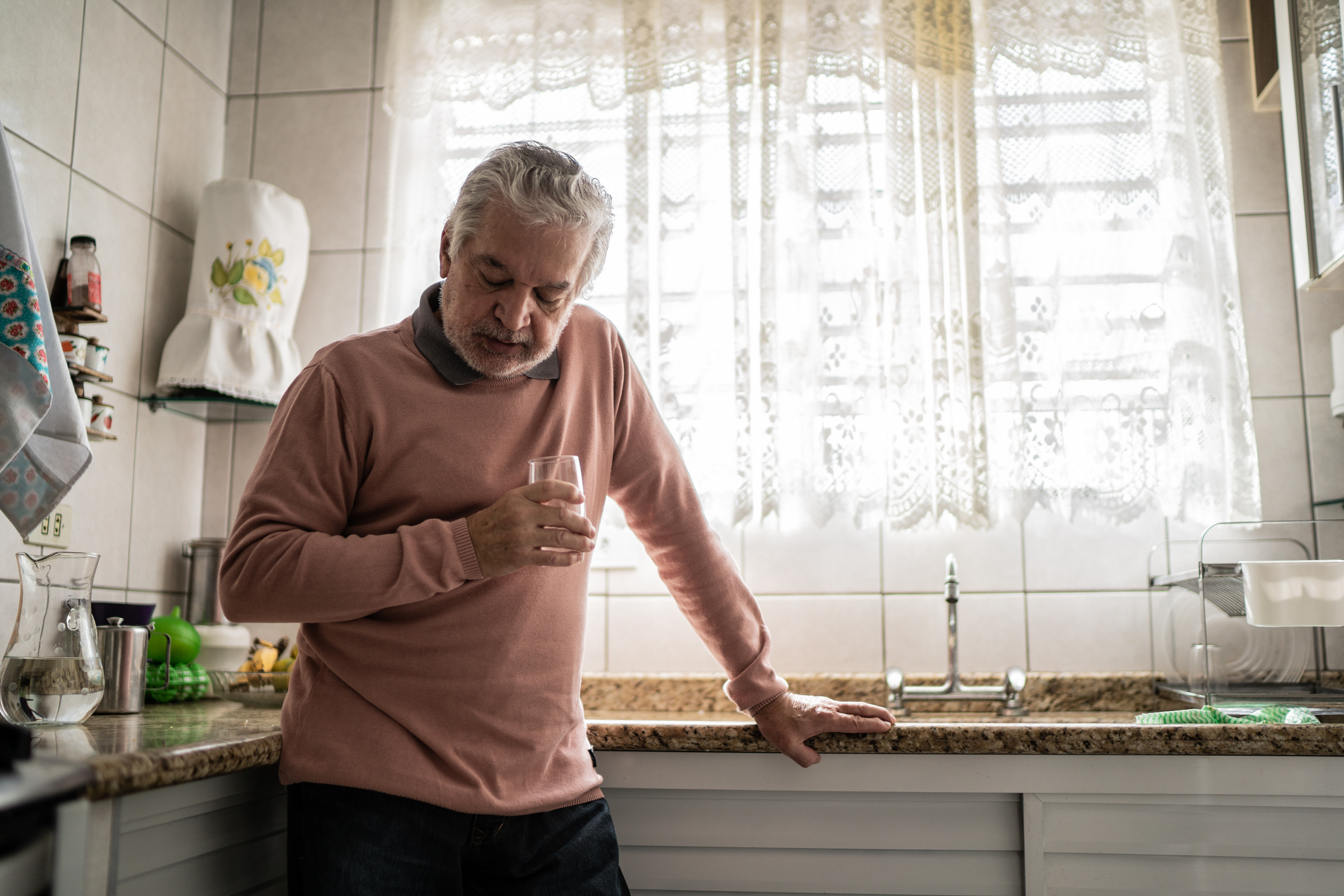For most people, their blood-pressure-related concerns have to do with hypertension, meaning blood pressure that is dangerously high. But some people have to worry about the opposite problem, hypotension, meaning blood pressure that is dangerously low. The classic symptoms of hypotension are fatigue, dizziness, lightheadedness, fainting, depression, breathing problems, blurred vision, difficulty concentrating, nausea, and sometimes excessive thirst. People with hypotension are at significantly increased risk of falls and accidents, and they’re much less likely to be able to function in their workplaces or handle family responsibilities.
While doctors usually encourage patients to keep their blood pressure below 120/80, simply having a pressure lower than that “magic number” does not mean someone has hypotension or is any danger. Because the ideal blood pressure is highly individualized, there’s no exact cutoff between high and low blood pressure that applies universally. Many people spend their entire lives with what looks like low blood pressure on paper while experiencing no symptoms from it, while others, at similar levels, would begin to notice ill effects.
Hypo vs. Hyper
High blood pressure is known as “the silent killer” because most people can’t tell that they have it just from the way they feel. Doctors need to rely on blood pressure readings to know if someone has hypertension. With hypotension, it’s just the opposite. It’s not so much the number that counts as whether or not the patient is experiencing symptoms.
Unlike with hypertension, the dangers of hypotension are not related to long-term damage to the cardiovascular system and are instead closely tied to the symptoms and signs of low blood pressure. That makes hypotension a serious condition worth diagnosing and treating. Any time you experience an episode of dizziness or lightheadedness, let your doctor know. They’ll want to rule out other potential causes such as nervous system problems, inner ear disorders and diabetes.
Causes of Low Blood Pressure
Hypotension has many potential causes. Excessive dehydration could bring about a drop in blood volume and thus blood pressure. You could also lose blood volume through undetected internal bleeding. Other possible causes are long-term bed rest, pregnancy, fever, hypothyroidism, heart valve disease, Addison’s disease, abnormally slow heart rate, low blood sugar, severe infection, parathyroid disease, and disorders of the autonomic nervous system. A frequent cause of hypotension is prescription drugs, especially blood pressure medications, antidepressants and erectile dysfunction drugs.
Orthostatic Hypotension
Some people experience a type of low blood pressure called orthostatic hypotension (sometimes called postural hypotension). This occurs when a person has a sudden drop-off in blood pressure, with its attendant dizziness, fainting or lightheadedness, when they stand up from a seated or prone position. These patients face a serious risk of falling, since the symptom comes on so quickly. Physiologically, what’s happening is that the blood has pooled in the legs. The heart, rather than speeding up to carry blood to the brain, continues beating at an insufficient pace and the brain is deprived of oxygen. A similar process can occur when blood pools in the gastrointestinal tract after a meal.
Orthostatic hypotension becomes more common with advanced age. Counterintuitively, many people who experience it also have high blood pressure. Such patients should talk to their doctors about the ideal hypertension medicine dose that will lower their blood pressure without increasing the risk of orthostatic hypotension.
Unfortunately, people with orthostatic hypotension have been found to be 54% more likely to develop dementia and twice as likely to experience ischemic stroke over the next 25 years. This may have to do with the fact that the blood pressure is changing significantly with great frequency. In a separate study, patients 55 and older underwent much more rapid cognitive decline if their blood pressure readings varied greatly between doctor visits over a five-year period.
If you experience orthostatic hypotension, there are two tricks you can try to avoid an episode.
First, before you stand up, tense your leg muscles for a few seconds. This literally “gets the blood pumping” and will keep your blood pressure from dropping so dramatically when you stand. The second method is to cross your legs before you stand, compressing the muscles, and to rise up with the legs still crossed and still compressed. That’s even more effective for staving off orthostatic hypotension symptoms.
Finding the Ideal Blood Pressure
With hypotension at one extreme and hypertension at the other, each individual likely has a blood pressure “sweet spot” that isn’t necessarily pinned to the broadest guidelines. A 2021 study suggests that certain blood pressure ranges are associated with better outcomes for people with particular cardiovascular risks. For example, heart attack risk was lowest for people whose blood pressure was between 110/85 and 120/90, while the ideal range for heart-failure risk was between 125/70 and 135/75. Meanwhile, stroke risk dropped evenly as both systolic and diastolic blood pressures were lowered. If someone has a higher risk of heart failure than heart attack, the study seems to suggest, then they may wish to target their blood pressure toward the range found to be associated with the best heart-failure outcomes.
But while such fine-tuning may be advisable for certain people, the basic goal for most patients should be to try to keep their blood pressure as low as possible. Lifestyle changes such as a low-sodium diet, exercising and quitting drinking are unlikely to cause your blood pressure to fall to dangerous levels. And if it should drop too low because of a medication or health condition, you’ll be able to recognize it by the symptoms and take steps to correct it.
Find out more about hypotension and hypertension by ordering your own copy of Bottomline Personal’s Blood Pressure Solutions.


